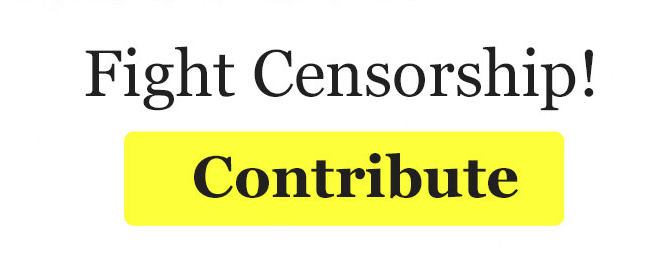
What should we do while waiting for environmental pollutants to be banned?
By: Christine Forsetlund Solbakken, Eldbjørg S Heimstad and Linda Hanssen // NILU – Norwegian Institute for Air Research
If we take blood samples from a representative sample of Norwegians today, the number may well rise by another few hundred.
But does that mean we are toxic? That we are poisoned? That “environmental pollutants” should appear as the cause of death on our death certificate?
We hope not, but we don’t know for sure.
The truth is that we have measurable amounts of hundreds of different environmental pollutants in our bodies. The same most likely goes for Swedes, Danes, Brits and most others who grow up in affluent Western countries.
But are we at the top of the world in environmental pollutants?
In a global perspective, Norwegians are probably far down on the list of those whose bodies carry the highest concentrations of well-known environmental pollutants.
ADVERTISEMENT
Should we be content with that?
Right now, we don’t know what all the environmental pollutants we are surrounded by – and which our bodies surround – will do to our health in the long run. Our knowledge of the health effects of environmental pollutants is largely based on the effects of each individual substance.
The famous cocktail effect – the overall impact of all those substances together – we don’t know a lot about.
And that worries us. What will all the environmental pollutants we surround ourselves with mean for our children? And for our children’s children? Will they be healthy and strong?
Where do all those toxic substances come from?
Some environmental pollutants are natural, such as the heavy metals lead and mercury.
But the majority of what we define as environmental pollutants are man-made, with long and alien names. PCBs, brominated flame retardants, per- and polyfluorinated substances or PFASs, furans, dioxins, phenols, dechloranes, pesticides…
Several of them have been shown to have hormone-disrupting effects, even in small amounts.
And we take them home. Seen with international eyes, Norwegians are relatively wealthy. Our homes are full of gadgets and electronic thingamajigs. We own at least one car, often two. We love to redecorate, and we spend a lot of time indoors. At work we sit in front of a screen, and when we get home, we pick up another one. Then we swipe left and right, and order even more new things from Alibaba, Wish, and Shein.
But what about the people who make all those things we order, goods that are transported halfway around the world on large container vessels. How many hundreds of environmental pollutants do they have in their bodies?
Has anyone studied them?
And when we’re tired of our gadgets, when the car stops running and the fridge has chilled its last bottle of bubbly, then what happens?
Then we dispose of our cars, refrigerators, old tablets and other electronic waste. Not always at the recycling station. Not always back to where we got them, either. Some end up in other countries, with poorer people and poorer legislation around the handling of harmful waste.
There, screens are smashed to smithereens that lie strewn across the ground. Coolant is drained and flows slowly down to the river. Tyres are burned on huge bonfires of trash. Every tiny bit that can be reused or is worth a few cents is gathered up. The rest? Nobody cares about the rest.
So, what about those who drink the water from the river and inhale the smoke from the fire? Do they have fewer and smaller amounts of environmental pollutants in their bodies than we do?
Or didn’t anyone study them either?
We have reached a point in time when there is a stronger focus on chemicals, a greater recognition that they are a major challenge. We know that environmental pollutants are a problem, and we are beginning to treat it as such. But the chemical manufacturing industry has a good head start on the authorities who make the laws.
At the same time, a lot of good regulation is being put in place, well-founded treaties with proud names and exotic acronyms. The Minamata Convention, the Stockholm Convention, the Basel Convention, the Rotterdam Convention, the Aarhus Convention. REACH. CRLTAP.
We applaud the Norwegian authorities when they work for an EU-wide ban on all the different variants that make up the PFAS group. Such measures are necessary for the effect to be strong enough, fast enough. But we will not attain any global change without international political decisions. We need those.
We need a “smoking ban” for environmental pollutants.
Political decisions are the only thing that can force the industry to think new, think green. Such things take time. What should we do while we wait for the authorities to ban environmental pollutants?
We who buy stuff, use it, then throw it away, can take a personal stand. We can let ourselves be inspired by previous generations.
Not the people who drove old cars into the lake. Not the people who tipped trash into the forest either. But the thrifty people who handed down clothing and sports equipment, who mended things and used them until they were worn out. The people who didn’t buy all the stuff they didn’t really need in the first place.
This much is certain: as long as we buy new gadgets, manufacturers will continue to produce them. They will use new substances with more or (usually) less well-known effects to make those gadgets prettier, shinier, softer, finer, more expensive.
There are environmental pollutants in our food. There are environmental pollutants in the air we breathe. There are environmental pollutants in our things.
But we can’t stop eating.
And we can’t stop breathing
This article was originally published by the Fram Forum
The Barents Observer Newsletter
After confirming you're a real person, you can write your email below and we include you to the subscription list.


